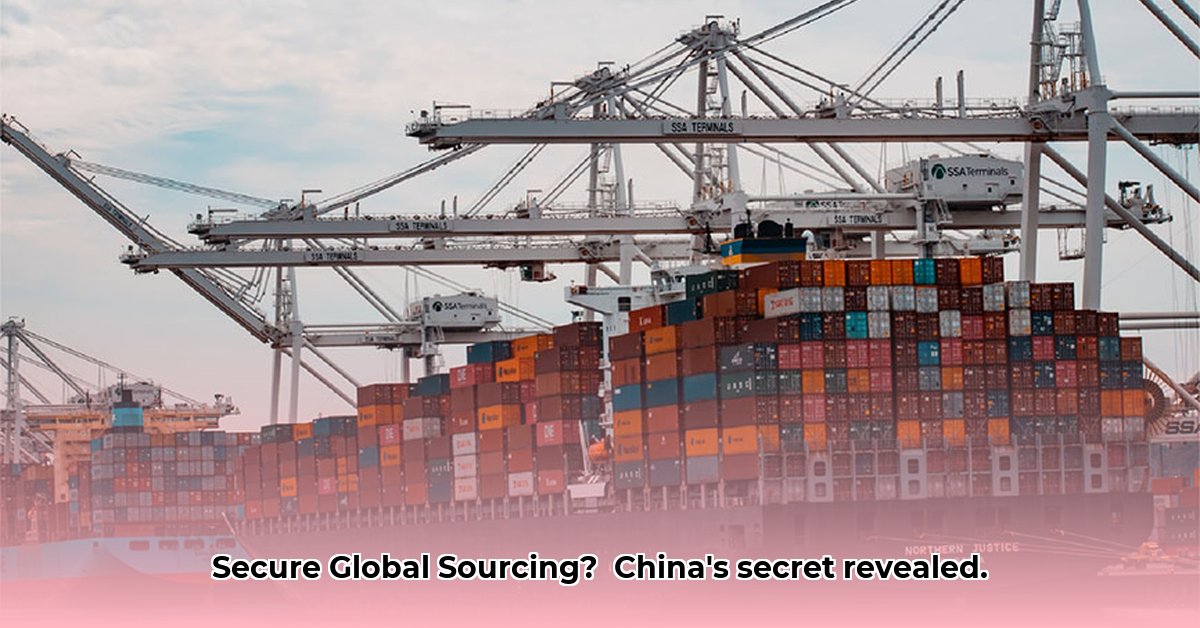
Intersourcing positions itself as a key player in navigating the complexities of sourcing goods from China. This review analyzes its strengths, weaknesses, and potential, offering actionable insights for clients and investors. Understanding the intricacies of the Chinese market presents unique challenges and opportunities for businesses, hence the need for specialized intermediaries like Intersourcing. How effective is their approach? Let's examine the evidence.
Understanding Intersourcing's Role
Intersourcing provides comprehensive sourcing solutions, focusing on connecting businesses with Chinese suppliers. Their services encompass supplier identification, contract negotiation, quality control, and logistics. This end-to-end approach aims to streamline the often-challenging process of global sourcing, particularly within China's dynamic manufacturing landscape. But how does their performance compare to competitors? This lack of comparative data is a key area for improvement.
Intersourcing's Strengths: A Solid Foundation
Intersourcing leverages an extensive network of vetted suppliers across diverse industries. This allows them to offer customized solutions tailored to individual client needs. Their team possesses in-depth expertise in Chinese manufacturing practices and market dynamics; this local knowledge gives them a significant competitive advantage. However, the absence of concrete quantitative data prevents a comprehensive assessment of their effectiveness compared to alternative sourcing solutions.
Intersourcing's Weaknesses: Areas for Growth
A significant limitation is the lack of publicly available performance data. The absence of quantifiable metrics—such as cost savings achieved, delivery time improvements, or supply chain efficiency gains—hinders a robust evaluation of Intersourcing's value proposition. This lack of transparency also makes direct comparisons with competitors difficult. More open access to key performance indicators (KPIs) would significantly enhance their credibility and attract investors.
The Opportunities and Challenges in China: A Balancing Act
China presents both immense opportunities and considerable risks for businesses engaging in global sourcing. Its vast manufacturing base and cost-effective production capabilities are highly attractive. Yet, factors such as geopolitical instability, potential trade disputes, and intellectual property concerns pose significant threats. How effectively does Intersourcing navigate this complex landscape? A clear risk mitigation strategy is crucial for its long-term success.
Assessing the Risks for Intersourcing
The following table summarizes key risks and potential mitigations:
| Risk Factor | Likelihood | Impact | Mitigation Strategy |
|---|---|---|---|
| Geopolitical instability in China | High | High | Diversify supplier base, develop contingency plans, conduct thorough due diligence. |
| Supplier problems/disruptions | Medium | Medium | Rigorous supplier vetting, diversified sourcing, robust contract terms. |
| Supply chain disruptions | Medium | Medium | Alternate shipping routes, strong relationships with logistics providers. |
| Intellectual property theft | Medium | High | Strong IP protection clauses in contracts, secure data transmission protocols. |
Actionable Insights: Moving Forward
To enhance its value proposition and attract investors, Intersourcing needs to develop and transparently communicate its performance metrics. This should include improved data reporting, supporting its claims with concrete examples of successful client collaborations.
| Stakeholder | Short-Term Actions | Long-Term Actions |
|---|---|---|
| Intersourcing | Develop and publicly share KPIs; publish case studies demonstrating success. | Invest in advanced data analytics, geographical expansion, and strategic partnerships. |
| Clients | Request clear, measurable results and detailed risk mitigation plans. | Seek long-term contracts with robust performance guarantees, and collaborative risk management. |
| Investors | Request comprehensive financial data and independent performance benchmarks. | Evaluate long-term growth strategies, market analysis, and competitive landscape. |
Conclusion: Building Intersourcing's Future
Intersourcing holds significant promise in the global sourcing market. However, success hinges on greater transparency and a proactive approach to managing risks inherent in operating within the vast and complex Chinese market. By prioritizing data-driven decision-making and demonstrating a commitment to open communication and verifiable results, Intersourcing can significantly enhance its position and foster stronger relationships with clients and investors.